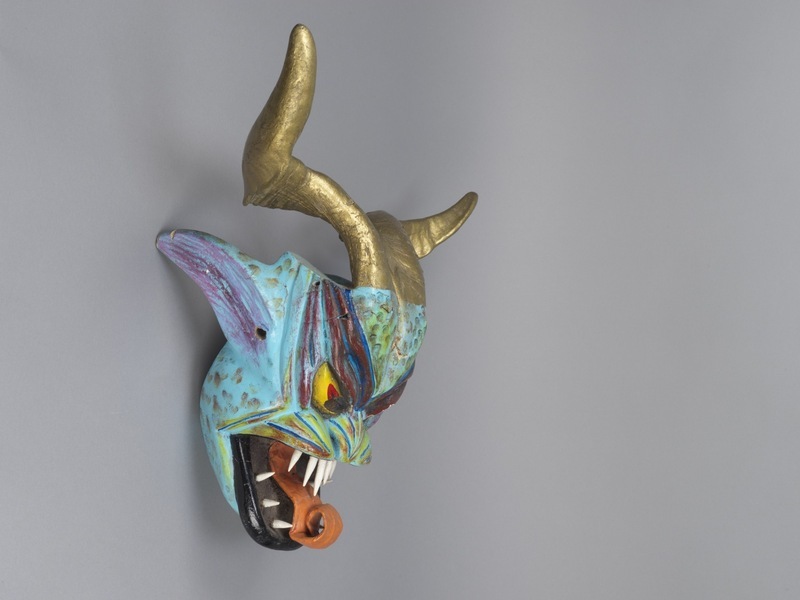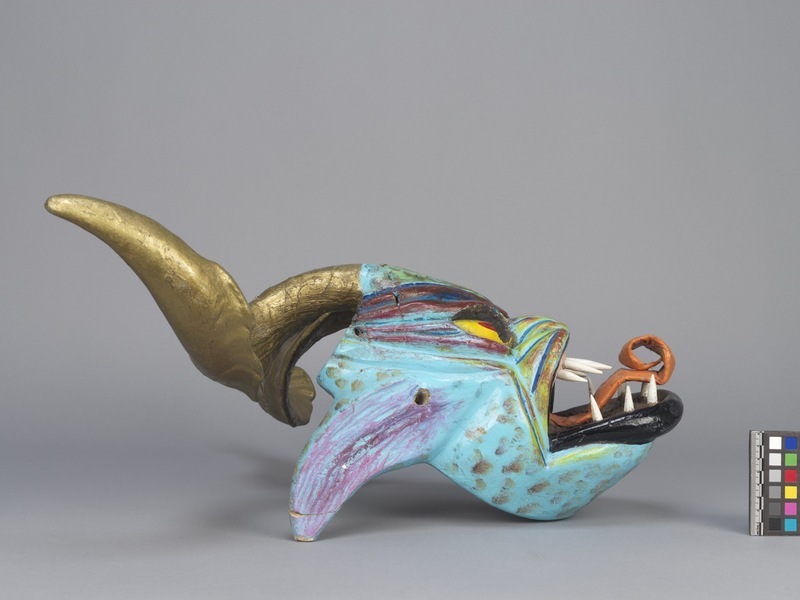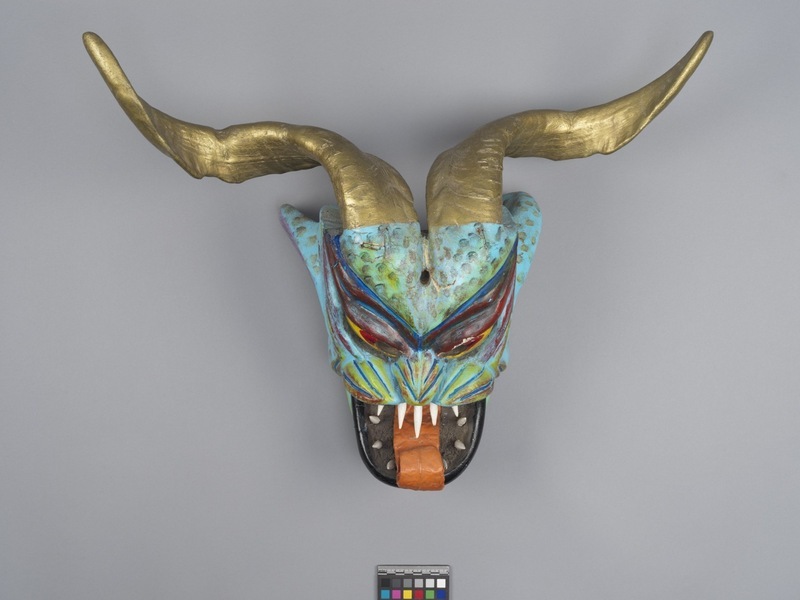Devil Mask Item Number: 3289/1 from the MOA: University of British Columbia



Description
Carved wooden mask painted bright blue and blue-green with red and dark blue markings. Curled gold sheep(?) horns are attached to the top by nails. Mouth is open wide with long pointed teeth and an orange rolled leather tongue. The large slanted yellow with red eyes have circular holes cut through. The brow ridge is painted dark blue and red. Large pointed ears are on either side of the head, with a single hole through each ear and one more hole through the centre of the forehead. 'La Pirana' is written in black felt on the back.
History Of Use
Masks such as these are worn during “Easter Battles” that take place in front of the main church in San Bartolomé Aguas Caliente, in the Apaseo el Alto Municipality. Because the Spanish missionaries forced the association of pre-Columbian deities with the Devil, it is possible that the native peoples of Mesoamerica sympathized with the Devil. Lucifer’s rebellion and ejection from hell may have struck a chord with the people’s own vilification and resultant uprisings. At Easter in San Bartolomé the central plaza becomes a battlefield between hundreds of masked, costumed devils and the un-masked, purple t-shirted followers of Christ. The Devils are called 'cornudos' (horned ones). Filling the battlefield, both factions move back and forward, fighting in pairs and using steel-bladed machetes. No side seems to win. The masked cornudos stay for a few days until Christ is resurrected; then they disappear for another year.
Narrative
In 2017 Guanajuato was one of the Mexican states most affected by drug-related crime. Authorities from the Apaseo municipality were made uncomfortable by inquiries concerning this context. Shortly before this mask was collected, there was a large unexplained explosion in Apaseo, which locals attributed to organized crime units.
Item History
- Made by Dalio Angel Perrusquia (Maker) in San Bartolo, Guanajuato, Mexico during 2015
- Collected by Laura Osorio between 2017 and 2018
- Owned by Laura Osorio before April 11, 2018
- Received from Laura Osorio (Seller), Museum of Anthropology Exhibitions Budget (Funding source) and Michael O'Brian Family Foundation (Funding source) on April 11, 2018
What
Who
- Culture
- Mexican
- Creator
- Dalio Angel Perrusquia (Maker)
- Field Collector
- Laura Osorio
- Previous Owner
- Laura Osorio
- Received from
- Laura Osorio (Seller), Museum of Anthropology Exhibitions Budget (Funding source) and Michael O'Brian Family Foundation (Funding source)
Where
- Holding Institution
- MOA: University of British Columbia
- Made in
- San Bartolo, Guanajuato, Mexico
When
- Creation Date
- during 2015
- Collection Date
- between 2017 and 2018
- Ownership Date
- before April 11, 2018
- Acquisition Date
- on April 11, 2018
Other
- Condition
- fair
- Accession Number
- 3289/0001